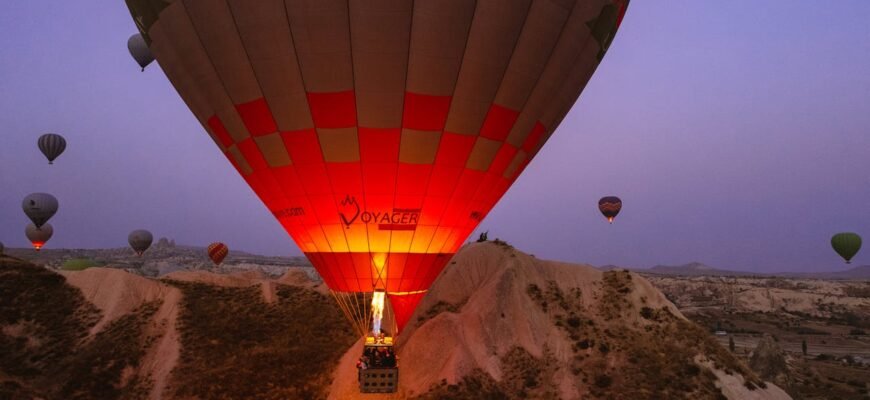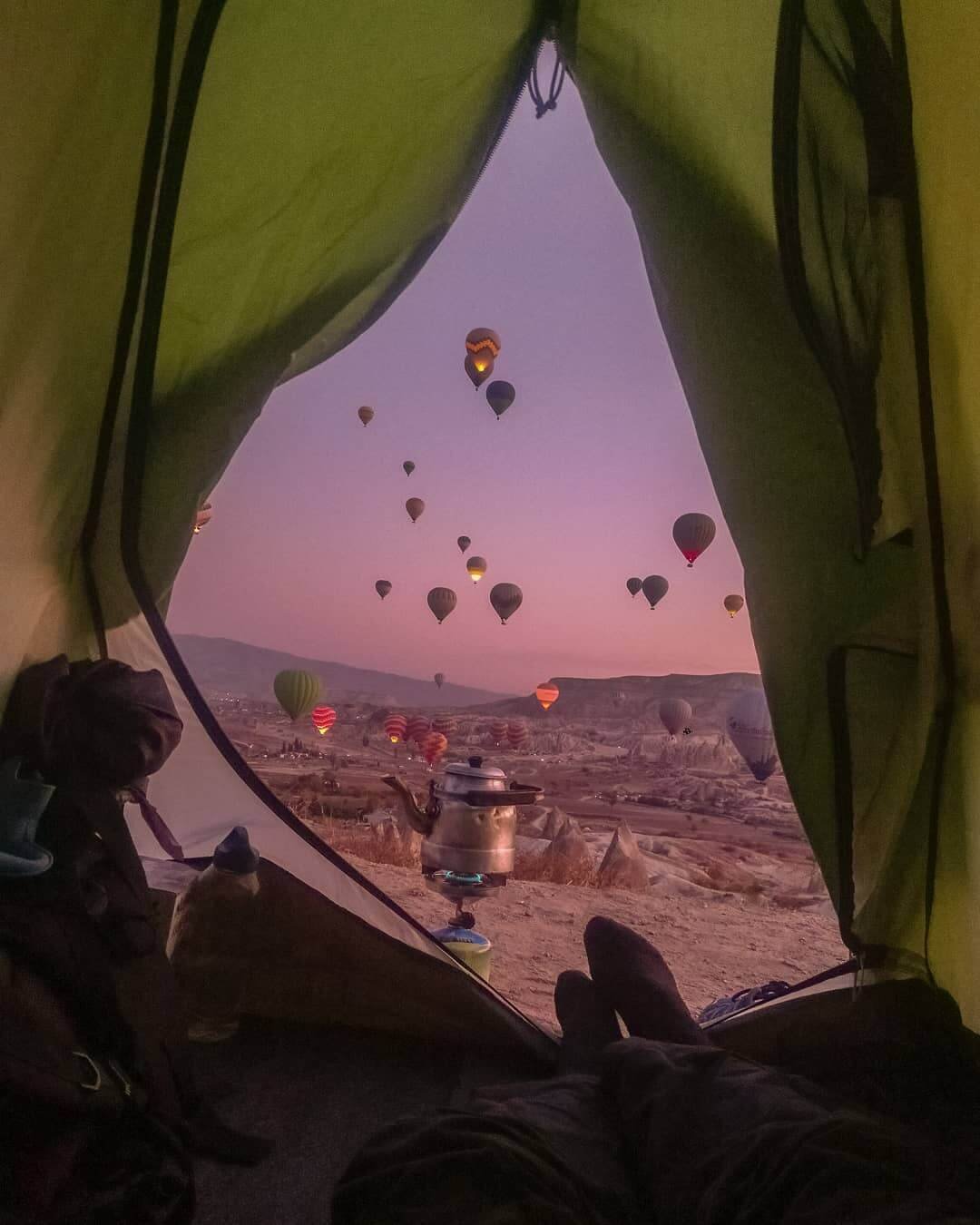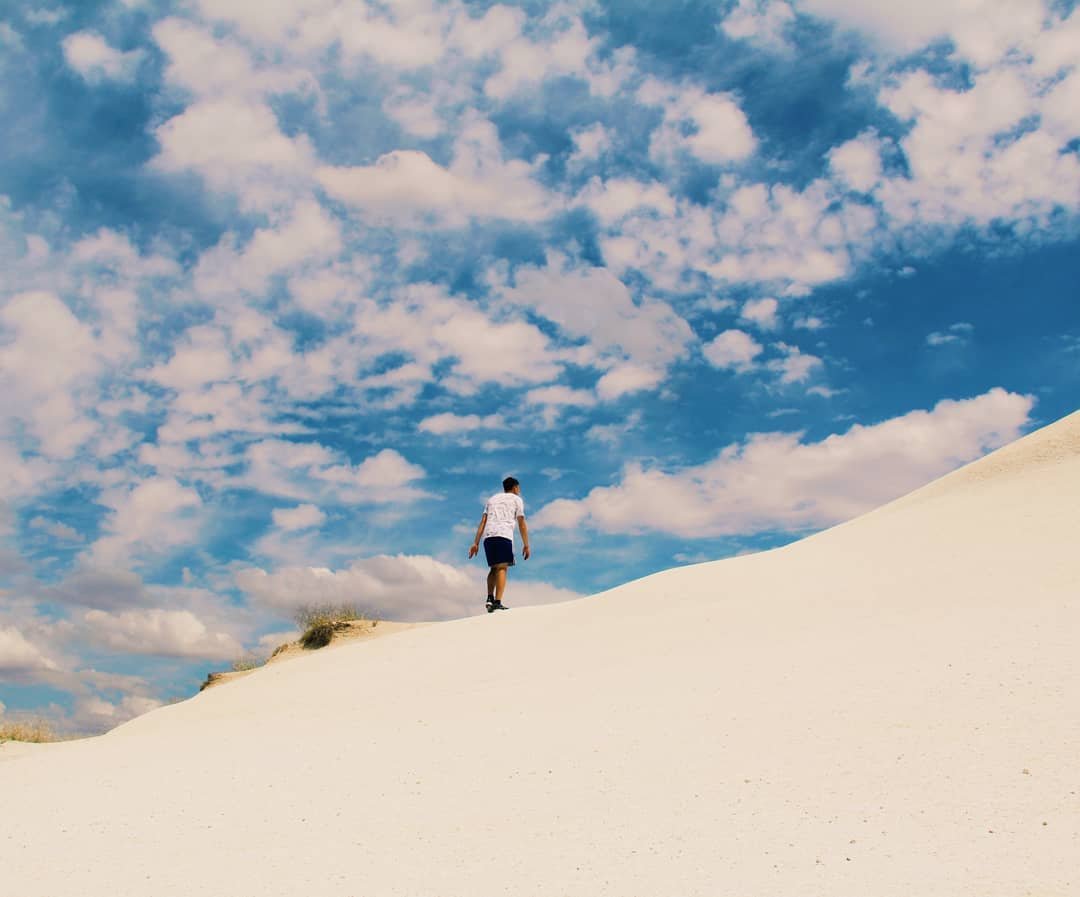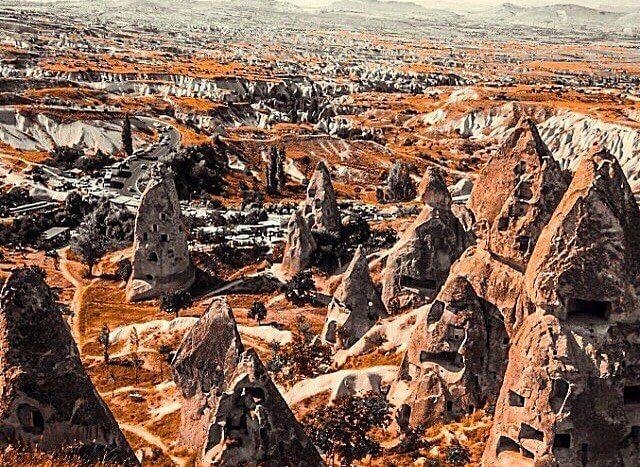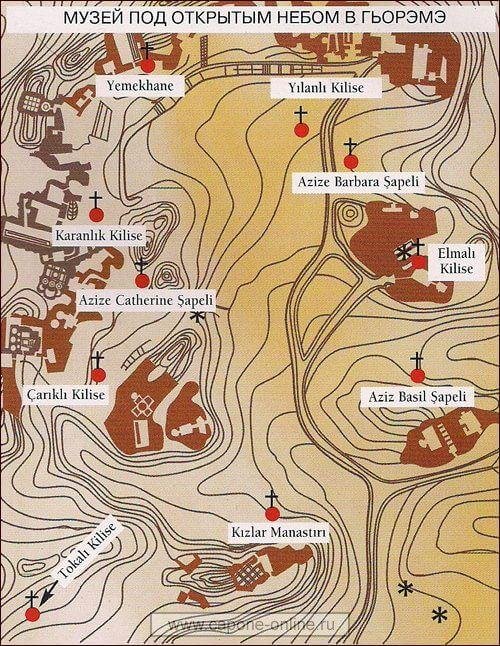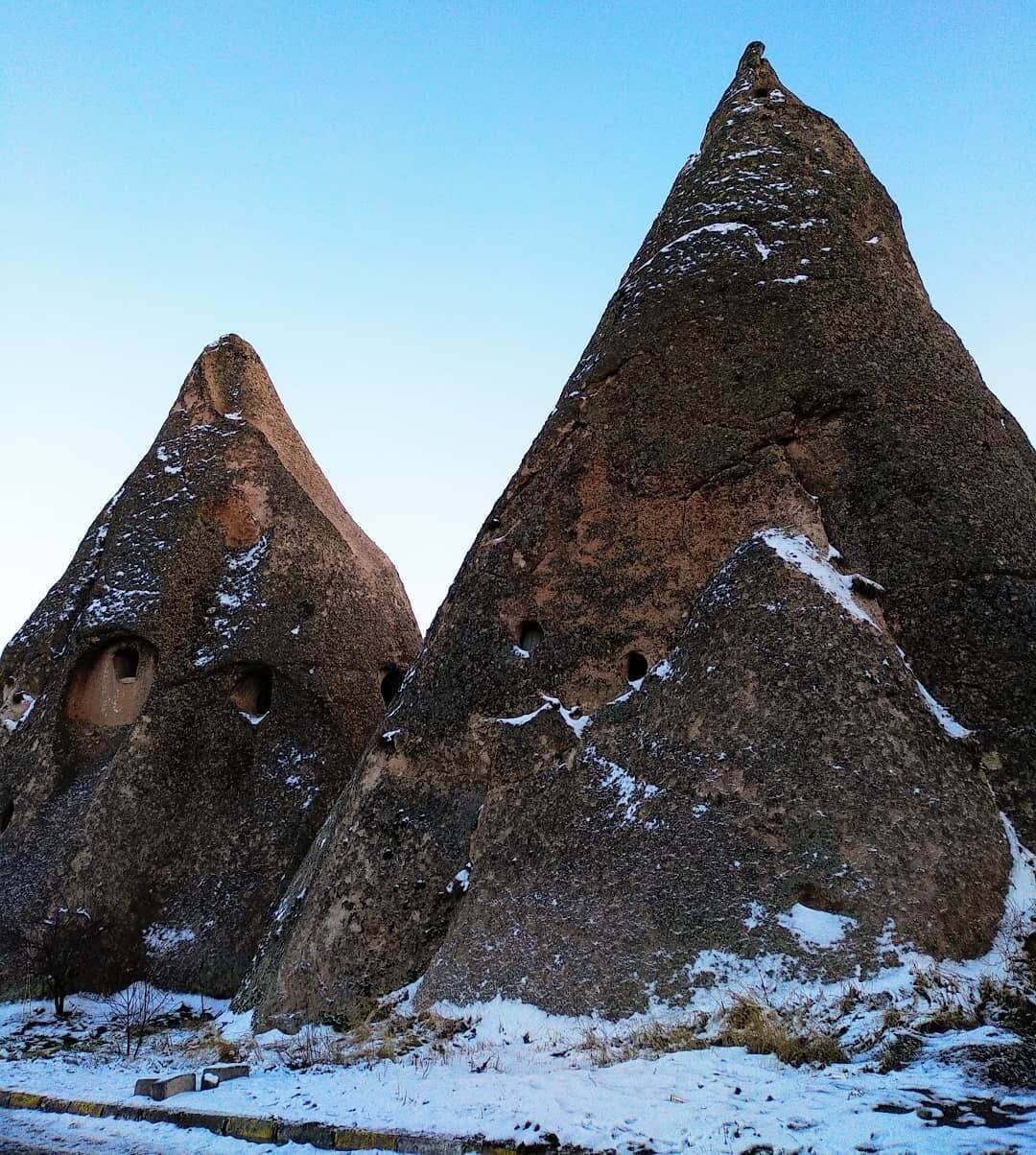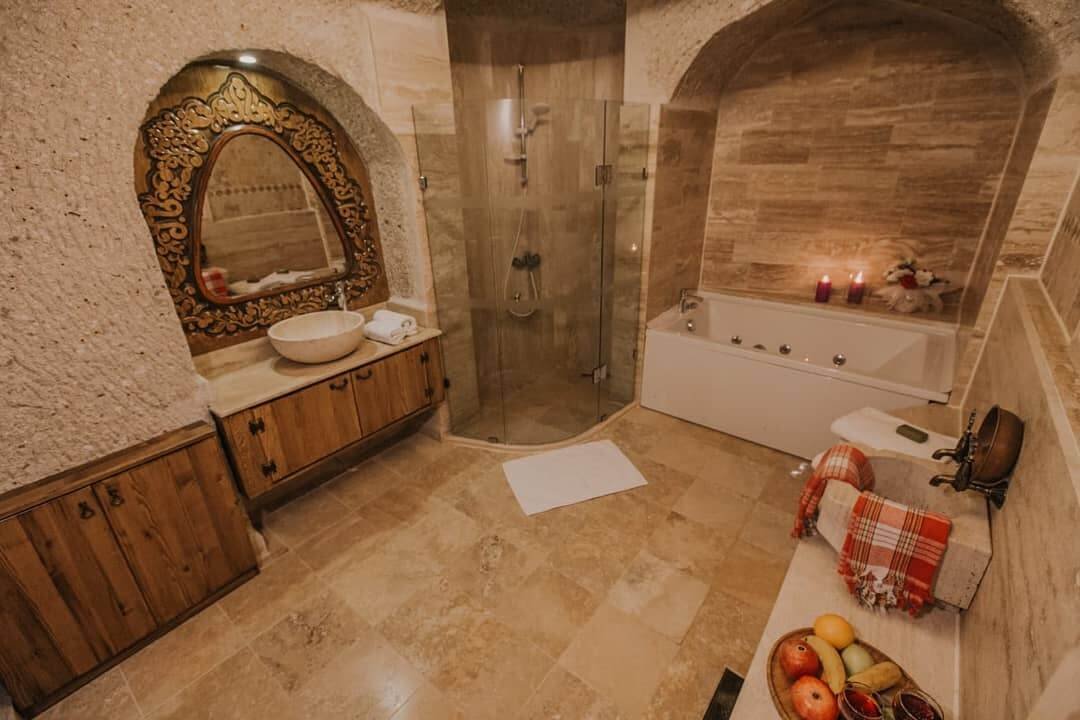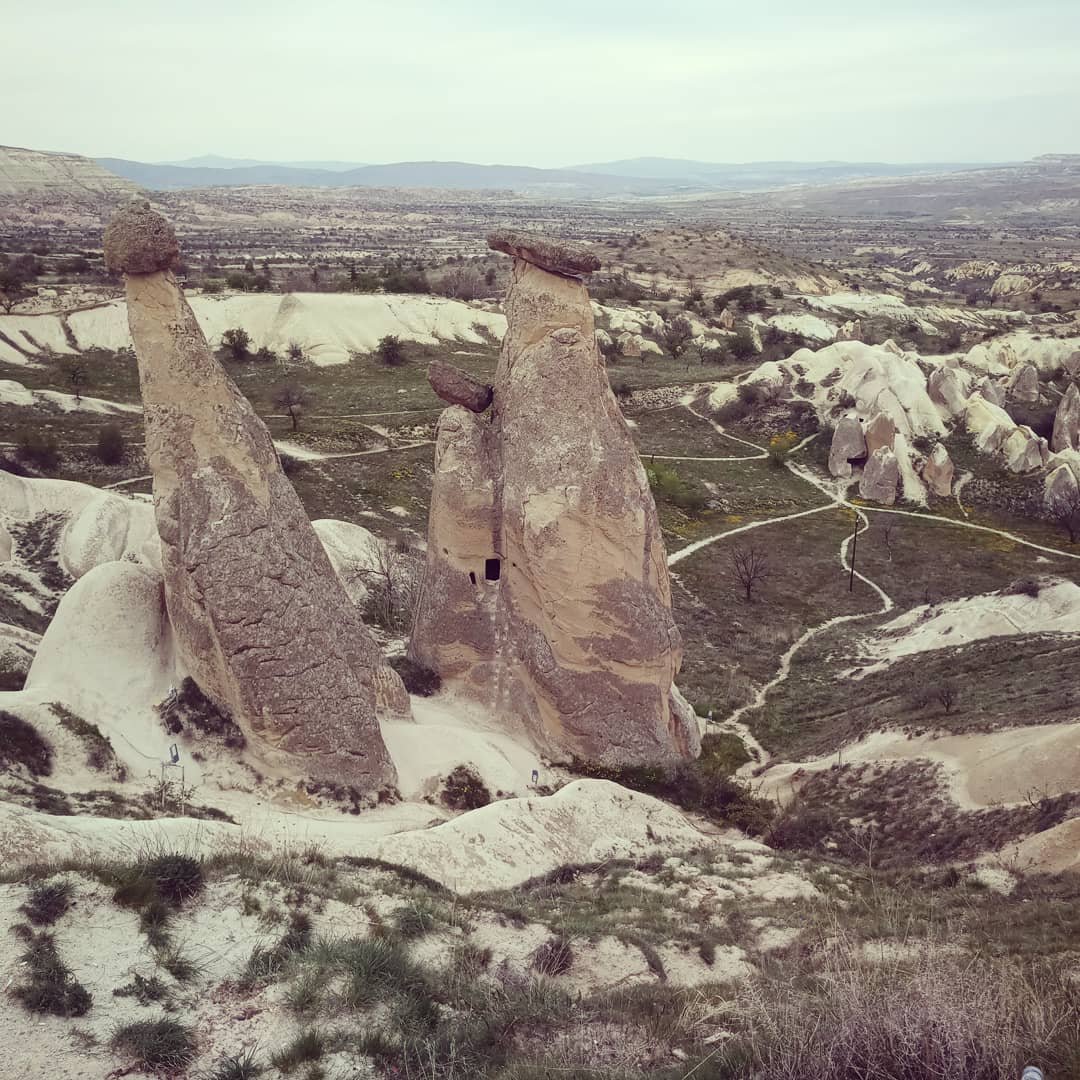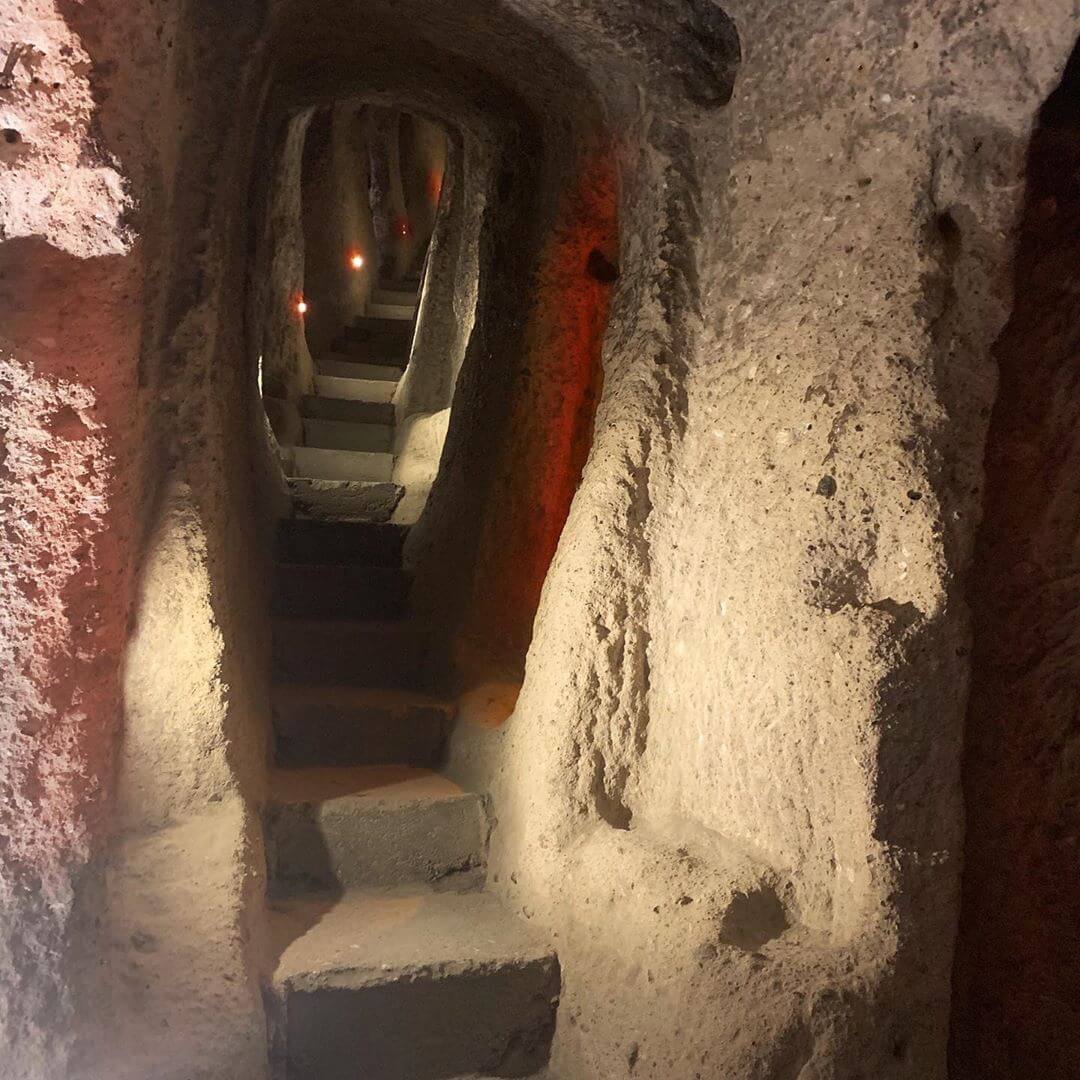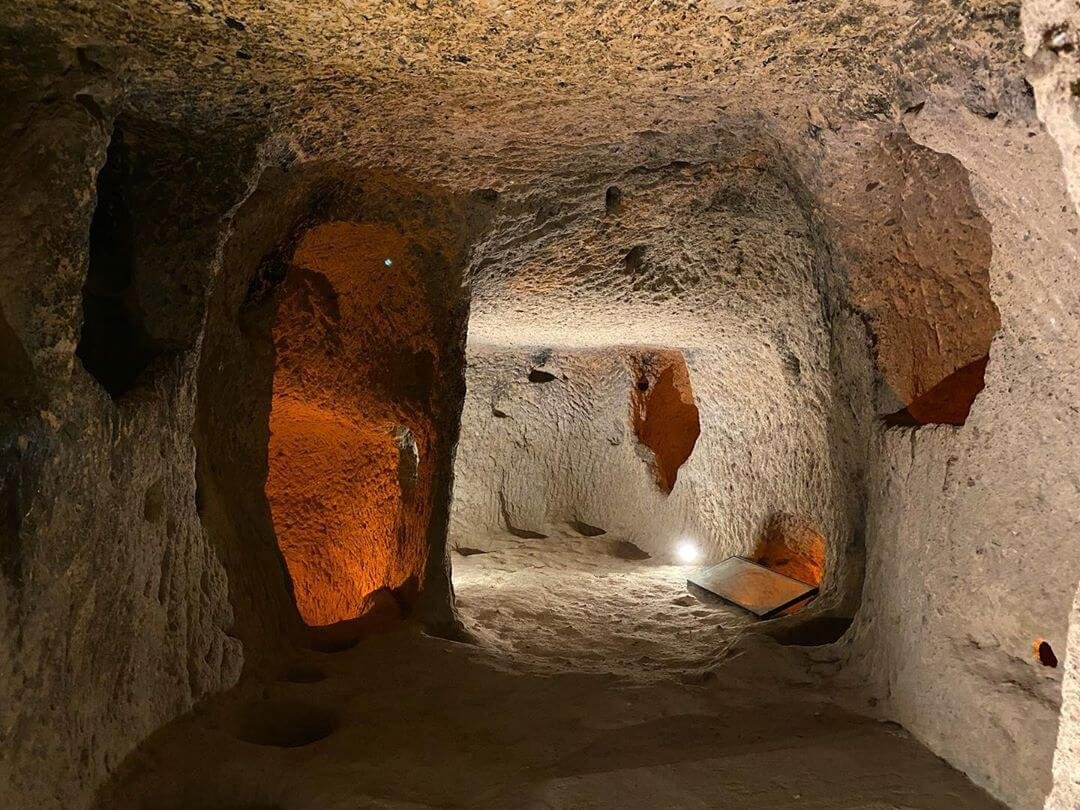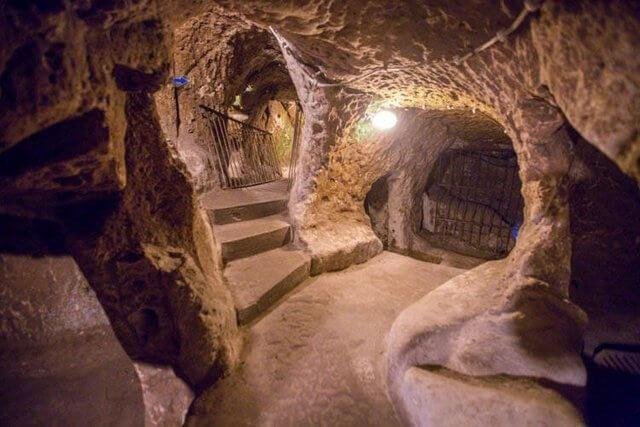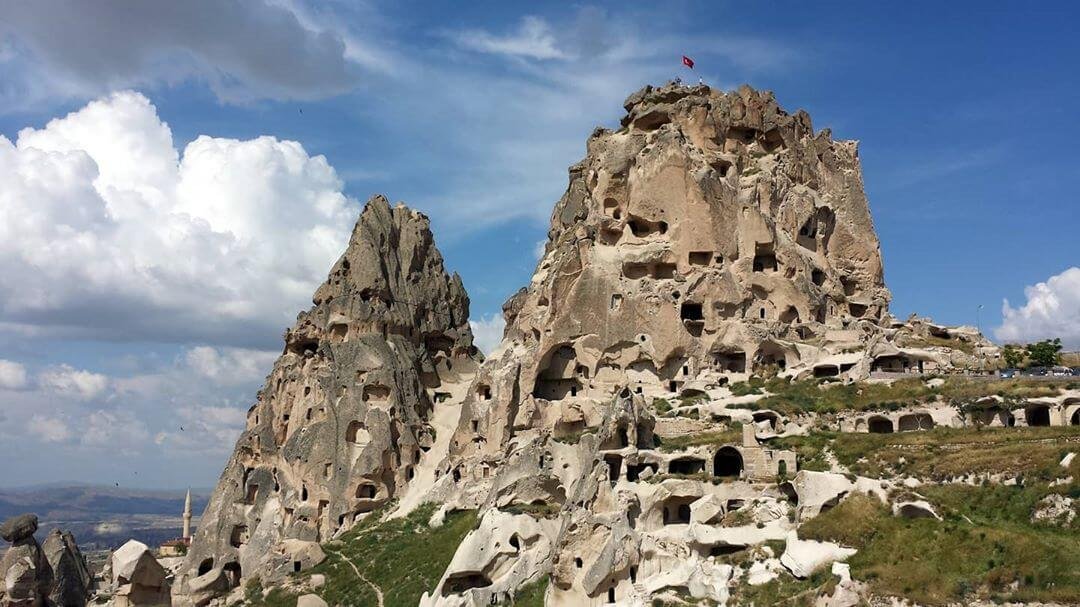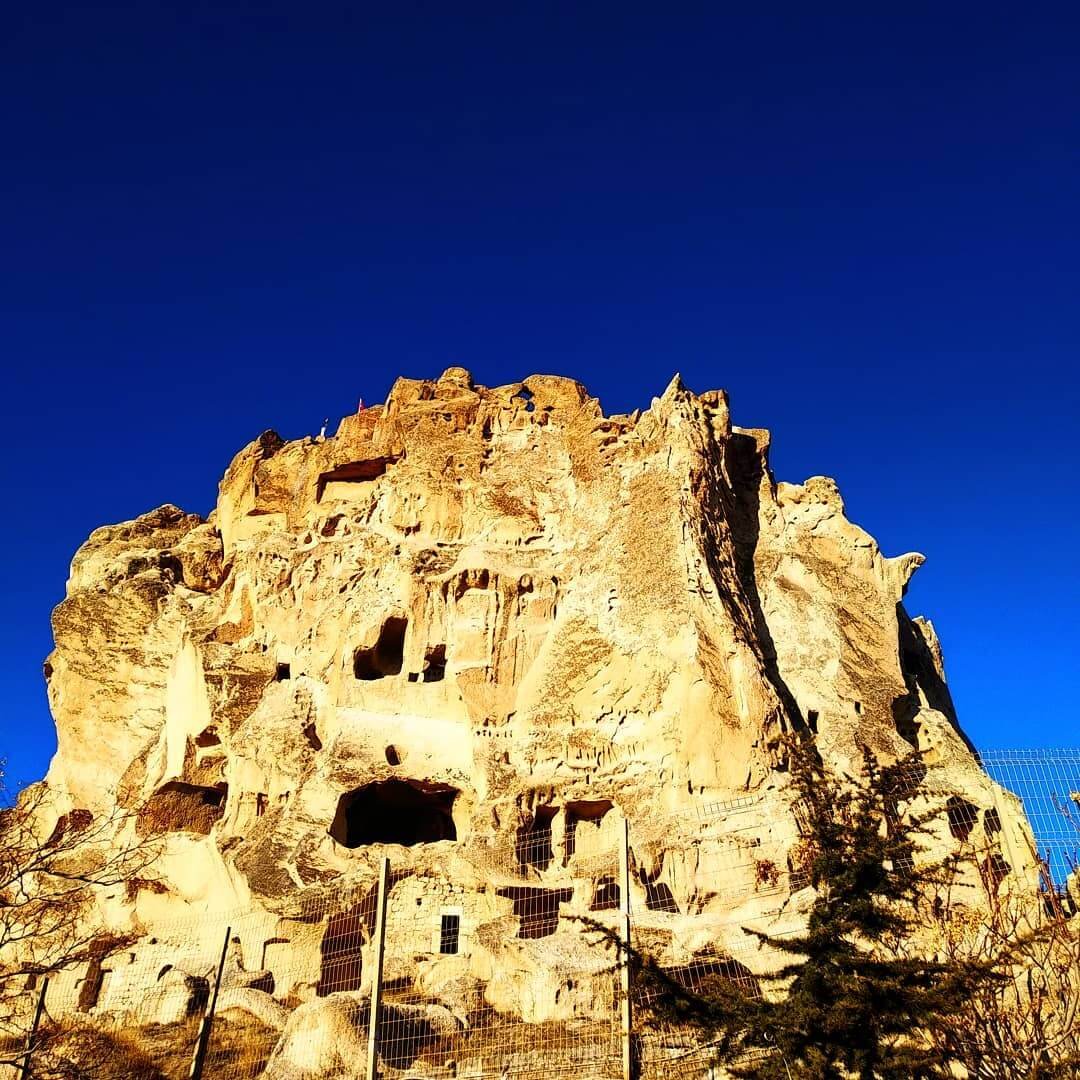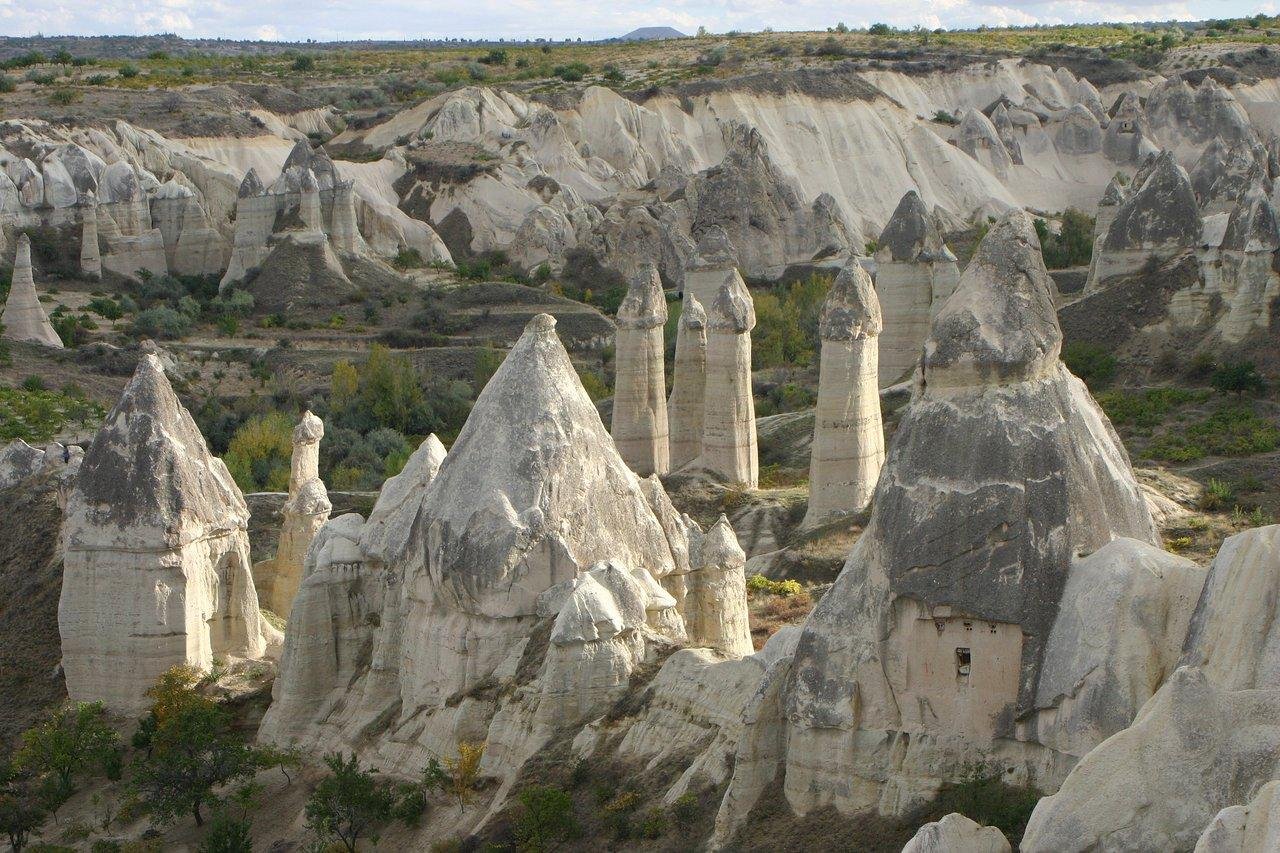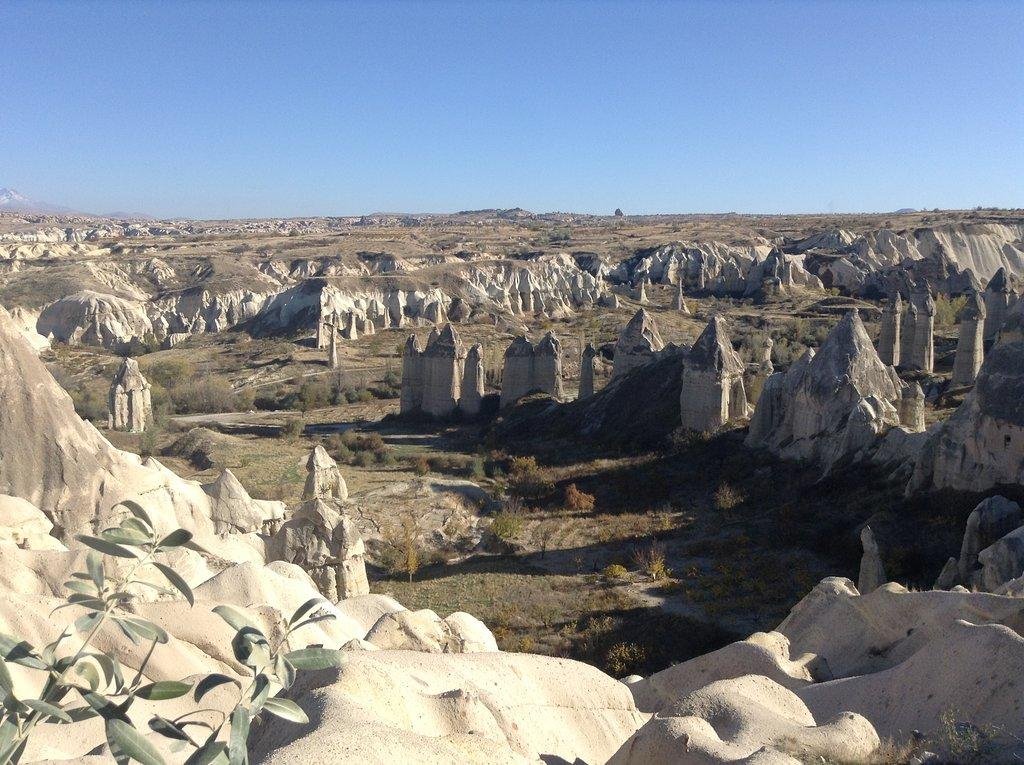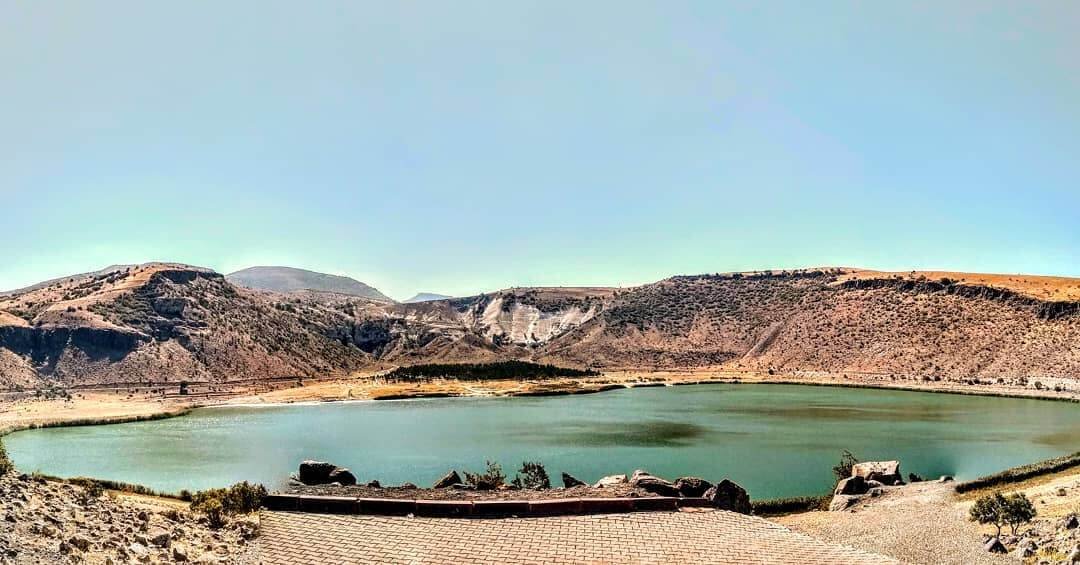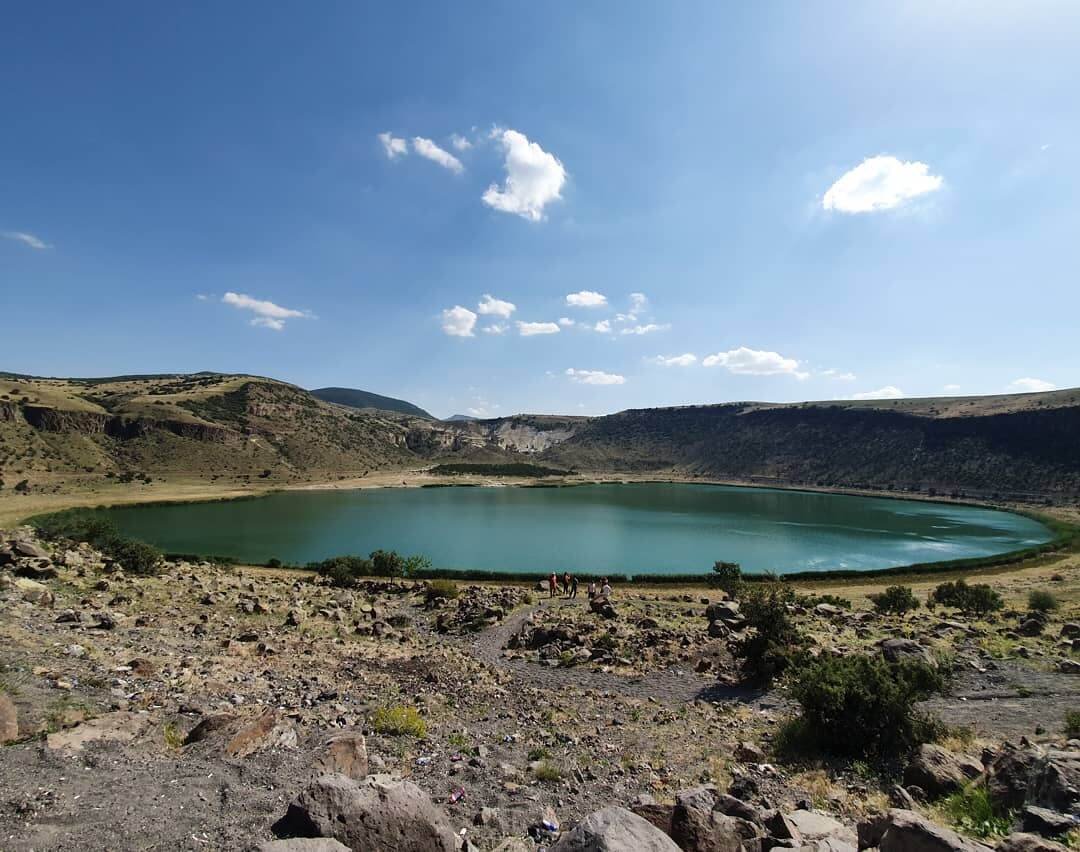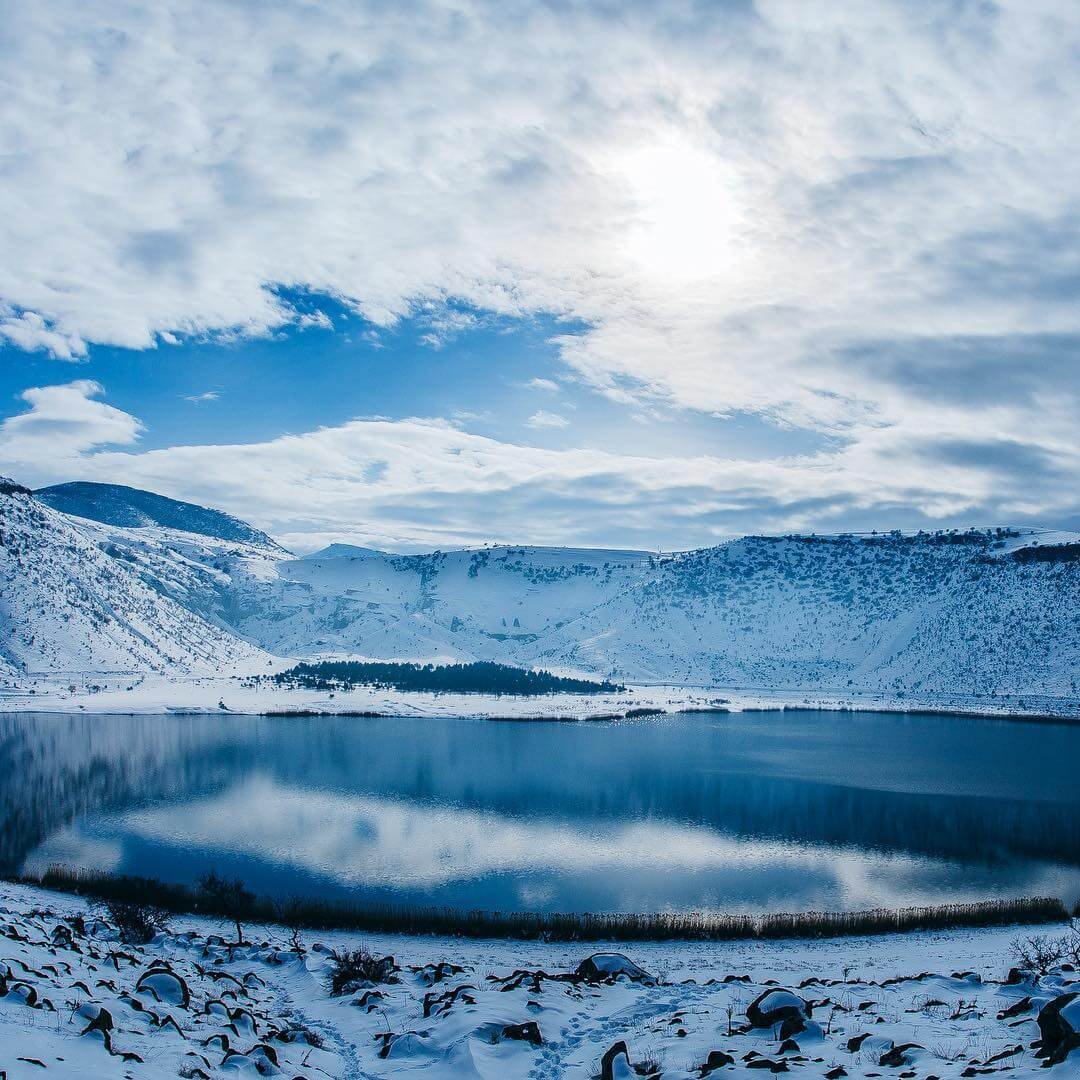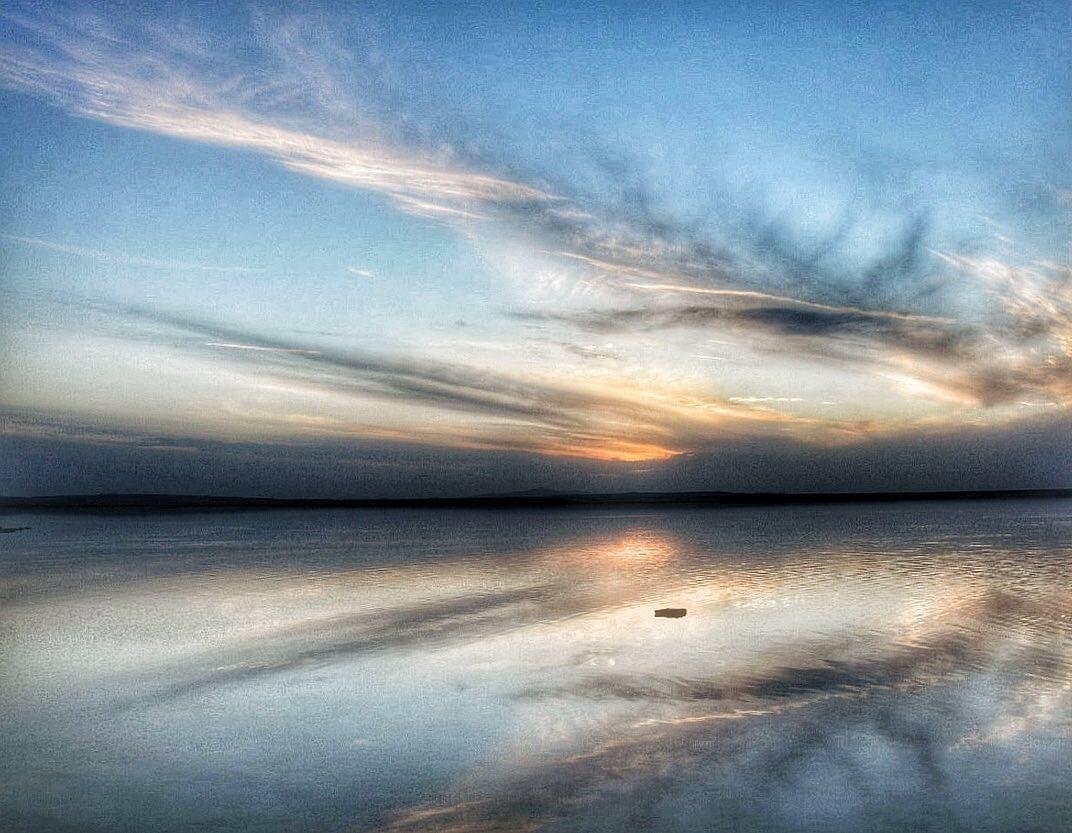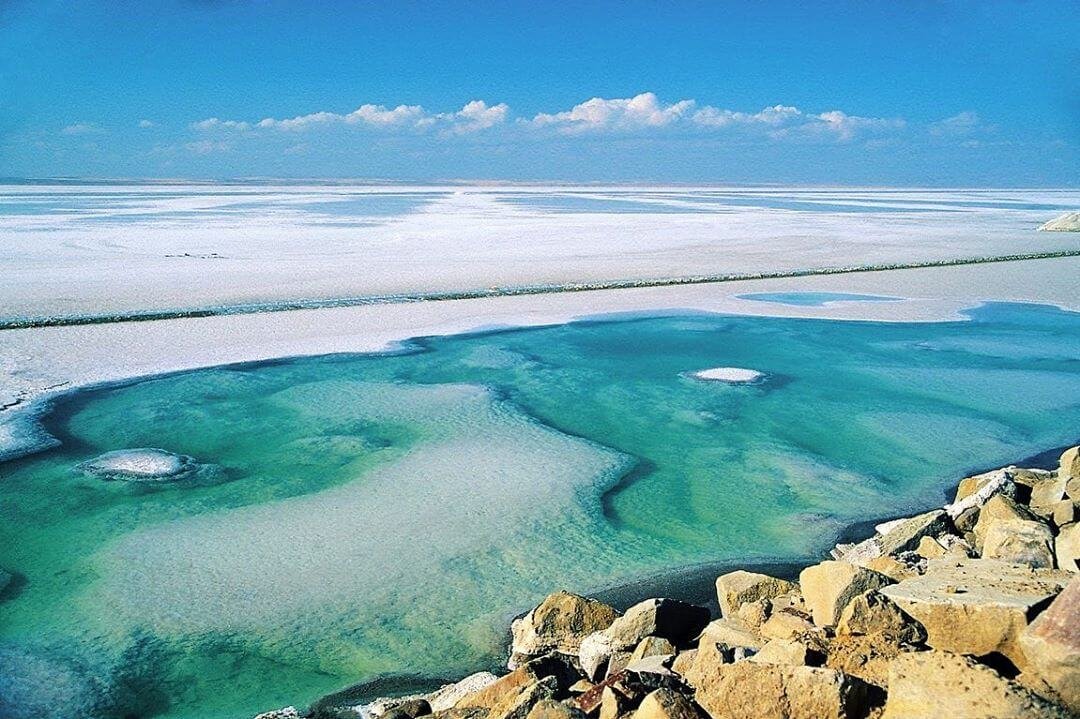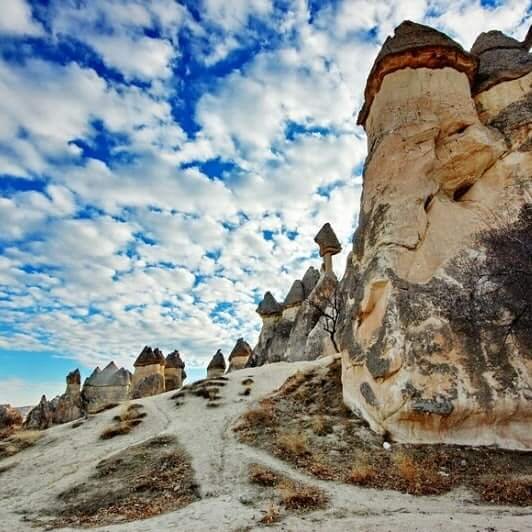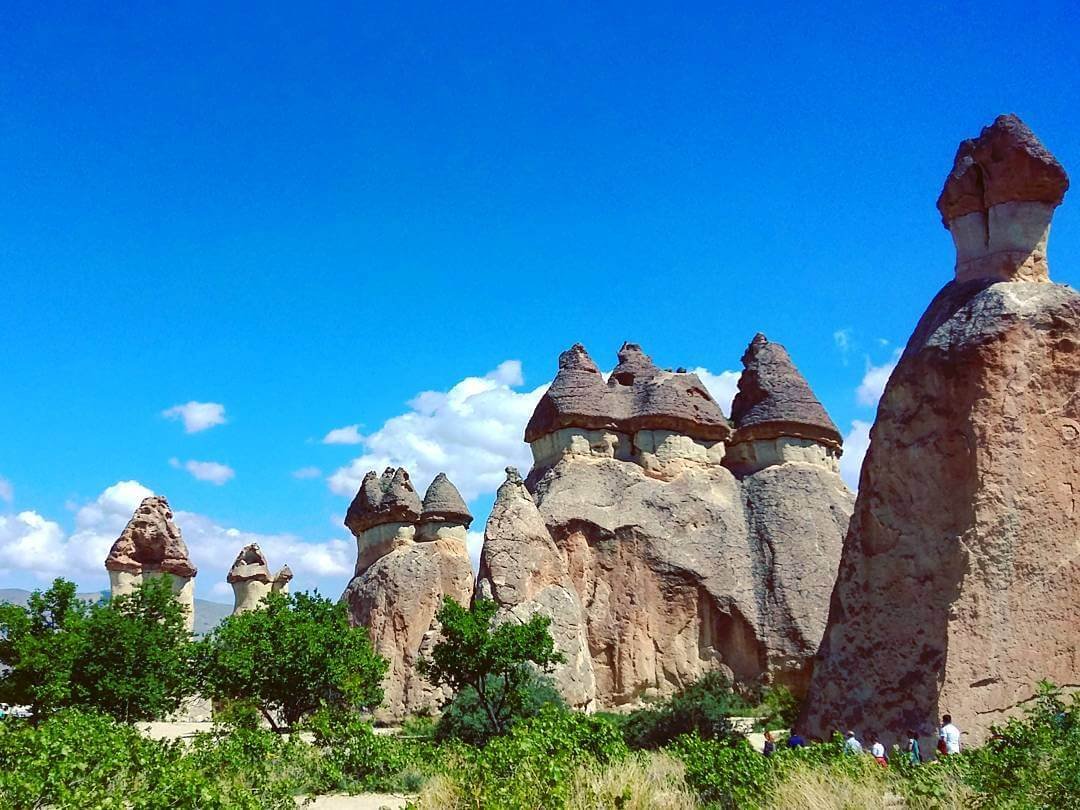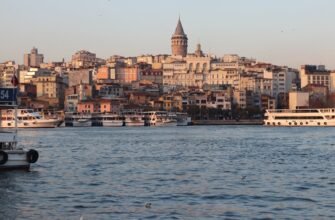While vacationing in Turkey, sooner or later every traveler starts to wonder: “Have I seen everything and is the sea really all that important?” No, we in no way wish to diminish the merits of a seaside holiday, but did you know that aside from coastal resorts the country boasts a multitude of other equally fascinating places worthy of your attention? A tour of Cappadocia in Turkey is one of those must-visit destinations. In this article, we explain where Cappadocia is located, what it looks like in winter (accompanied by photos), and of course, which tours are offered by local tour operators both in Cappadocia and in the region.
- Instead of an Introduction
- Göreme Open Air Museum
- Cave Hotels in Cappadocia, Turkey
- Hot Air Balloon Ride Over Cappadocia
- Underground Cities of Cappadocia, Turkey
- Underground City of Kaymaklı
- Underground City of Derinkuyu
- Uçhisar Fortress
- Valley of Love
- Crater Lake Nar in Cappadocia
- Tuz Lake – The Salt Lake of Turkey
- “Fairy Chimneys”
Instead of an Introduction
So, where is Cappadocia? We recommend reading our detailed article on the location of this Turkish region and how to get there – [link_webnavoz]How to Reach Cappadocia by Various Modes of Transport[/link_webnavoz].
In this article, we have focused entirely on the tour program presented here, detailing the attractions of Cappadocia, what to see, and what to pay attention to. By the way, you can visit this region at any time of year, as Cappadocia is no less beautiful in winter than in summer. Whether it’s December, January, or November – the month matters little compared to the traveler’s goal: to relax, take breathtaking photos, or even grumble about the cold (or heat), the off-season, and so on!
Shall we go?
Göreme Open Air Museum
Let’s begin with one of the less popular sites, judging by online search statistics. That doesn’t mean the Göreme Museum isn’t worth your attention – it’s just that most people know very little about it.
The Göreme Museum is a kind of temple complex carved into the rock. You will not find the typical dome-topped churches familiar to the Christian eye; instead, there are rock formations with interiors carved out to serve as various churches.
Dating back to the 9th century, most of the frescoes in these sites have been remarkably well preserved.
Below is a map of the museum, giving you an idea of what this place looks like.
The museum is open from 8 AM to 7 PM during the high (tourist) season, and until 5 PM in winter. The tourist season runs from April to October, so we recommend visiting the Göreme Open Air Museum in March or November when the crowds are thinner.
According to the latest information, the entrance fee is about 6 USD (approximately 54 Turkish Lira). Note that due to fluctuating exchange rates and economic conditions, this price is subject to change.
Cave Hotels in Cappadocia, Turkey
What else can you see in Cappadocia besides the museum? The Valley of Love comes to mind, but let’s leave that aside for now and move on to the region’s underground hotels.
The cave hotels are designed in the style of European castles—with one exception: from the outside, they do not always look extravagant. Cappadocia boasts a vast array of rock hotels, each uniquely charming and steeped in history; indeed, the older the establishment, the more intriguing it becomes.
- Kale Konak Cave (4 stars) – Located in Uçhisar near the castle, with room rates starting from 100 USD per night;
- Mithra Cave (2 stars) – Situated in Göreme with a magnificent view of the hot air balloons, with prices starting from 50 USD;
- Cappadocia Cave Suites (five stars) – Featuring amenities such as a jacuzzi, sauna, pool, and splendid terraces, this cave hotel has earned the reputation of being the best in the region, with prices starting from 90 USD;
- Artemis Cave Suites (five stars) – Located in Göreme and occupying one of the highest points in town, it offers breathtaking sunrise views and a chance to watch hot air balloons ascend, with prices starting from 70 USD;
- Museum Hotel – Located in Uçhisar and famed for its outdoor pool and spectacular vistas, with plenty to explore on the premises to ensure an unforgettable stay, with prices starting from 190 USD.
Hot Air Balloon Ride Over Cappadocia
If you plan to dazzle everyone with your photos from Cappadocia, be sure to experience a hot air balloon ride. Yes, it isn’t exactly budget-friendly, but it is undoubtedly worth it.
A detailed review can be read in our article here. For now, a brief description: the tour is conducted in the early morning and is highly dependent on weather conditions, particularly the wind—since in strong winds no one would risk the safety of the tourists given the high altitude.
The journey begins early in the morning, before sunrise, so that travelers can witness the sunrise from the sky. The sight is simply breathtaking.
The tour costs from 100 dollars. In Cappadocia, this attraction is one of the most prominent. Do note that balloon rides can only take place in good weather, so check the forecast before planning your trip (this is especially important for tourists vacationing in Kemer, Alanya, Antalya, or other Turkish cities).
Underground Cities of Cappadocia, Turkey
To make your trip even more exhilarating, don’t miss the chance to explore Cappadocia’s underground cities. These structures are literally hidden from the public eye and were originally built to shelter inhabitants from raiding mercenaries and thieves.
Some of these underground cities could accommodate up to 30,000 residents, and their sheer scale is simply astonishing!
Most of these cities were constructed so that the entrance could be sealed once the last resident had entered. Moreover, special mechanisms within the caves were used to block passages, a precaution in case an enemy managed to infiltrate.
Underground City of Kaymaklı
This underground city could accommodate up to 15,000 people and is organized much like any other town. It had everything necessary for a comfortable life—if one can call living underground comfortable. Archaeologists have uncovered rooms which, in their opinion, served the following purposes:
- Stables;
- Wine cellar;
- Kitchen;
- Confessional;
- Chapel;
- Ventilation shafts;
- Storerooms.
Underground City of Derinkuyu
The largest of the discovered underground cities (according to archaeologists, it could house up to 30,000 residents) has 8 floors open for visitors – though only about 15% of the city has been uncovered. The lowest accessible level is 54 meters deep. All floors are interconnected and the ventilation shafts are still operational, which is truly remarkable. The city is equipped with lighting. Here you can find a school, dining hall, stables, residential quarters, and even its own water reservoir. A truly astonishing place.
Uçhisar Fortress
Uçhisar Fortress – which translates as “the outermost fortress” – is a rock that local residents have carved into a true fortress. Its uniqueness lies in its location, nestled between three key towns for the region – Ürgüp, Nevşehir, and Göreme – which once made it a vital stronghold.
In fact, Uçhisar is part of a fortress system comprising three fortresses – Uçhisar, Bağışsar, and Ortahisar. Uçhisar itself stands 1,400 meters above sea level, and from its peak, a magnificent view of the valley unfolds.
Time inexorably erodes even the most beautiful architecture. Due to collapses, the fortress now appears extremely dilapidated due to rockfalls.
Valley of Love
A visit to Cappadocia is not complete without taking a photo against the backdrop of the magnificent Valley of Love. This is a place where you might wish to shield your children’s eyes, as the protruding stone formations can resemble indecent shapes.
The best way to admire the valley is from a bird’s-eye view – so consider booking a hot air balloon ride and joining the so-called balloon festival.
No video can capture the unique atmosphere over the valley; you simply have to see it with your own eyes.
Crater Lake Nar in Cappadocia
There are two theories regarding the formation of Lake Nar (not to be confused with the city of the same name). Lake Nar is located approximately 70 km from Nevşehir.
The first, official theory is that Lake Nar formed in a volcanic crater, as evidenced by the abundance of hot springs nearby.
The second, more conspiratorial theory suggests that Lake Nar was formed in the crater of a meteorite that not only created a huge pit but also destroyed a nearby temple, scattering its fragments over several meters.
The lake’s water is divided into two layers – the darker layer does not warm up at all, which is rather peculiar. Locals say that prolonged exposure to the lake may cause headaches. Whether you decide to visit is entirely up to you.
Tourist reviews are rather mixed, but one thing is certain: not a single traveler has been harmed during a visit.
Tuz Lake – The Salt Lake of Turkey
Turkey’s second largest lake is located along the road toward Ankara and is one of the saltiest lakes. According to scientists, its salinity is around 340%, due to the absence of any inflowing water sources.
The lake covers an area of approximately 1,665 square kilometers, with a depth of up to 2 meters during winter. In summer, when temperatures soar, the lake recedes and salt crusts form on its surface, creating the impression that you are walking on water – a sort of Turkish answer to the Dead Sea.
Photos taken here are simply stunning.
In addition to the salt formations, you can also observe pink flamingos that have made this place their favorite spot for their flamingo routines.
So, if you are an independent traveler who hasn’t booked a package tour – for instance, arriving at Istanbul Airport and exploring the country by car – make sure to visit this spot.
“Fairy Chimneys”
This is yet another valley featuring stone pillars, but atop these pillars are cone-shaped structures. In reality, these aren’t roofs or chimneys at all, but the houses of people who lived here long ago. They became known as “Fairy Chimneys” because at night the residents would light fires, making the rock formations appear as if they were glowing from afar. Hence the unusual name.
The chimneys are located in the Paşabağ Valley and are definitely worth a visit – especially since admission is free.
Of course, Cappadocia has many other sites that deserve your attention; we have only managed to describe the most well-known ones.

